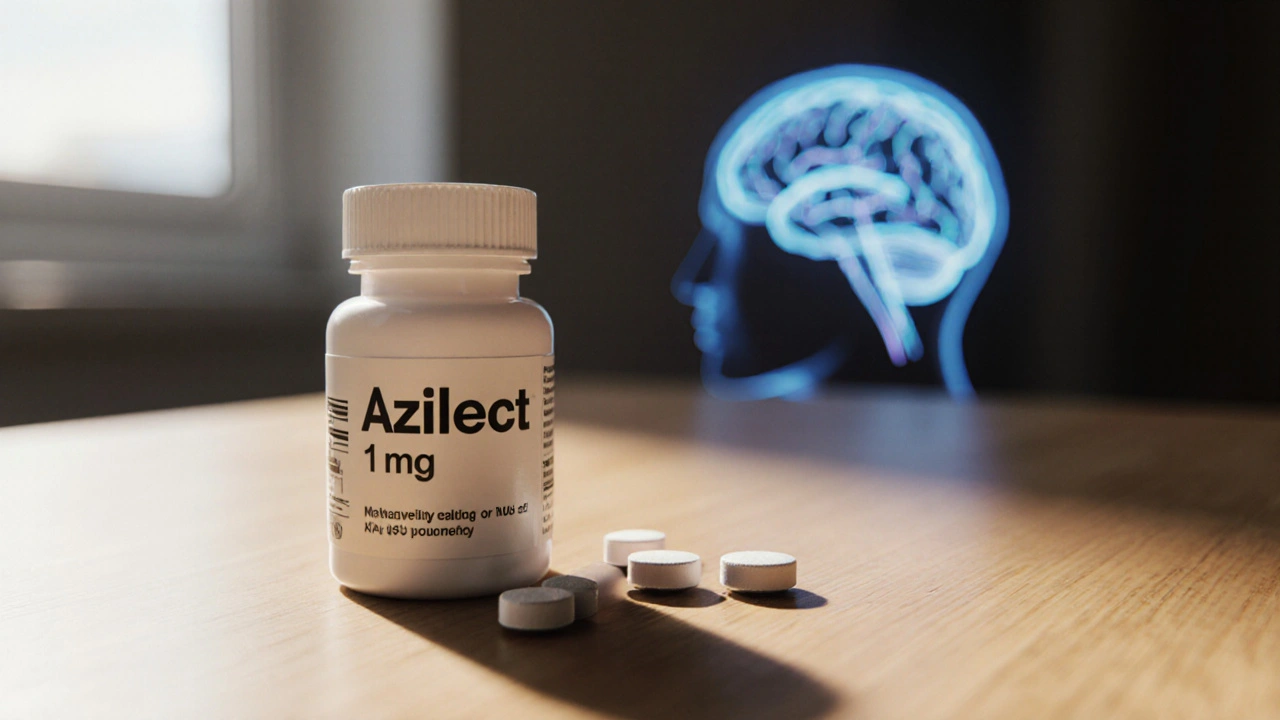Selegiline: A Deep Look at Its Role in Neurology
When working with selegiline, a selective MAO‑B inhibitor prescribed for Parkinson’s disease and off‑label depression. Also known as Deprenyl, it blocks the breakdown of dopamine, helping to preserve motor function and mood. Clinicians also consider its impact on Parkinson's disease, a progressive disorder marked by loss of dopaminergic neurons in the substantia nigra and how it fits within the broader class of MAO‑B inhibitors, drugs that selectively inhibit the enzyme monoamine oxidase B, reducing dopamine catabolism. Another drug in this family, rasagiline, shares a similar mechanism but differs in dosing schedule and side‑effect profile.
Key Aspects of Selegiline
At its core, selegiline encompasses MAO‑B inhibition, which means it requires a steady supply of dopamine to be effective. In Parkinson’s disease, the brain’s dopamine levels are already low, so protecting the remaining dopamine can slow motor symptom progression. This protective effect is why doctors often add selegiline to levodopa therapy – the combination boosts symptom control while allowing lower levodopa doses, which in turn reduces levodopa‑induced dyskinesias. For depression, the drug’s ability to increase dopamine and phenylethylamine gives a mood‑lifting effect that differs from standard SSRIs, making it a useful option for patients who don’t respond to first‑line antidepressants.
Dosage forms include oral tablets (5 mg, 10 mg) and a transdermal patch (6 mg/24 h). The oral route is typically started at 5 mg daily, titrated up based on response and tolerability. The patch delivers a steady dose that bypasses the gut, reducing gastrointestinal side‑effects and providing more consistent plasma levels. Common side‑effects are mild: nausea, dry mouth, insomnia, or headache. More serious concerns involve hypertensive crises if dietary tyramine is ingested in large amounts—a risk that is lower with selegiline than with non‑selective MAO inhibitors, but still worth monitoring.
Drug interactions are a major consideration. Combining selegiline with other serotonergic agents (SSRIs, SNRIs, tramadol) can trigger serotonin syndrome, so clinicians usually space the start of these drugs or adjust doses. NSAIDs and anticoagulants may increase bleeding risk because MAO‑B inhibition can affect platelet aggregation. Patients should also avoid over‑the‑counter cold remedies that contain dextromethorphan, as the combination can cause confusion or agitation. Regular blood pressure checks are advisable when initiating therapy, especially if the patient consumes high‑tyramine foods like aged cheese or cured meats.
Overall, selegiline’s role in managing Parkinson’s disease and certain mood disorders stems from its targeted enzymatic action, its ability to preserve dopamine, and its relatively favorable safety profile compared with older MAO inhibitors. Understanding how it fits with other treatments—levodopa, rasagiline, antidepressants—helps clinicians tailor therapy to each individual’s needs.
Below you’ll find a curated collection of articles that dive deeper into buying generic medications safely, comparing symptom‑specific treatments, and handling side‑effects. Whether you’re looking for price‑comparison guides or detailed drug‑interaction reviews, the posts ahead offer practical insights that complement what we’ve covered here.

